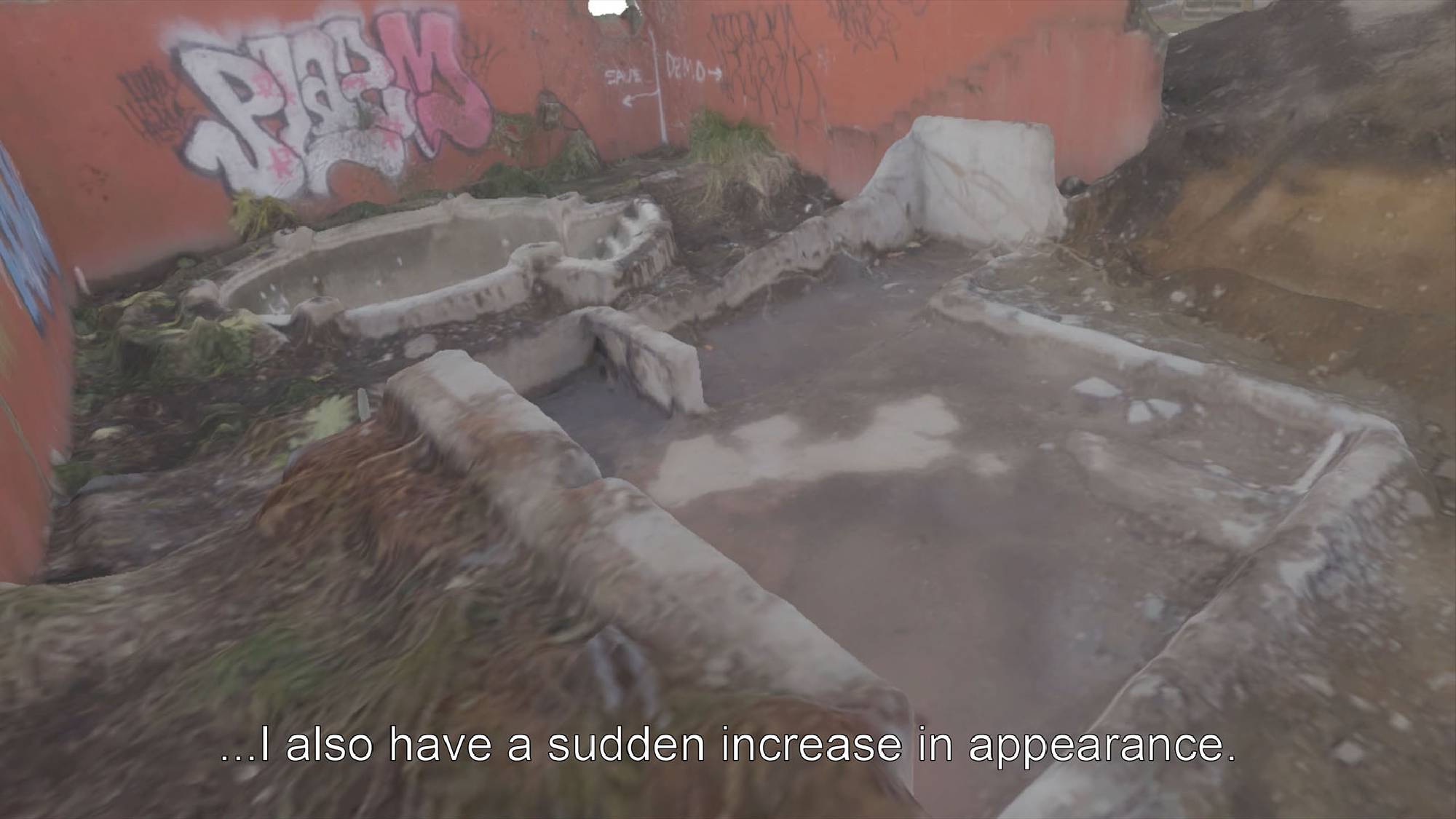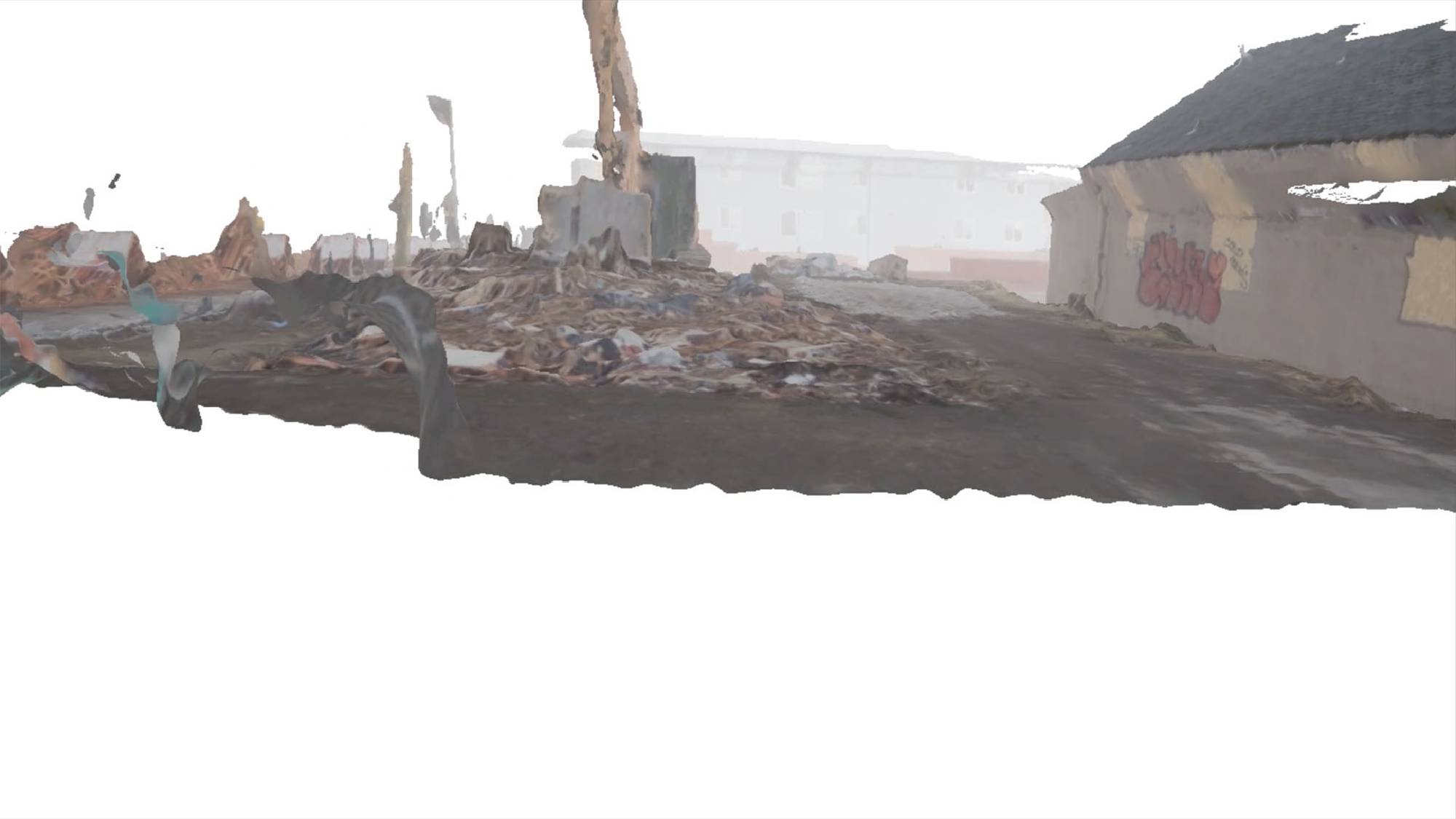

Concrete Grounds proposes the creative mapping of urban spaces while addressing the many ways images, language, and data describe our built environments. It represents a synthesis of three technologies still in their infancy at the time of the project's development – Photogrammetry, Machine Learning, and VR.

Photogrammetry is a process that renders 3D models of space by analyzing hundreds of 2D photos. The resulting models are highly virtualized – hollow and glitchy – creating uncanny relationships between the surface image and the underlying structures of these sites.
I was first introduced to Machine Learning in 2015 through a collaboration with Google AMI – Artists and Machine Intelligence. When they asked the question: “How can Artists use these tools to create meaningful relationships with large sets of data?” I proposed training two recursive neural networks to “speak” in the tone of city planners and public protests to developments in Seattle. After collecting 500,000 related documents from the city and training the two speech models, the machine intelligences could analyze my photogrammetric images and generate absurd or frighteningly accurate dialogues about these scenes of the city’s development.
VR is a field that I have entered carefully, focusing on its artistic potential as a form of expanded cinema, and as a medium for the critical examination of space, presence, and the world of images we inhabit.

With Concrete Grounds these three emerging technologies combine around a research project that focuses on mapping spaces and data in Seattle, Washington – a city that has continually experienced rapid socio-economic, technological, and visual change. The artwork resulting from this research is a short VR film that explores sites around Seattle and generates dialogues using Machine Intelligences trained on local datasets.
Coding
Maxwell Forbes (US)
Yukun Zhu (CN/US)
Inaugural Google Artists and Machine Intelligence Research Award
4Culture Tech Specific Art Award
Made possible by DXARTS - The University of Washington Department of Digital Arts & Experimental Media